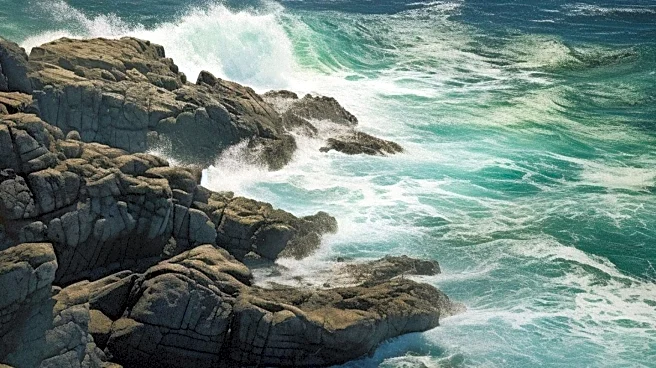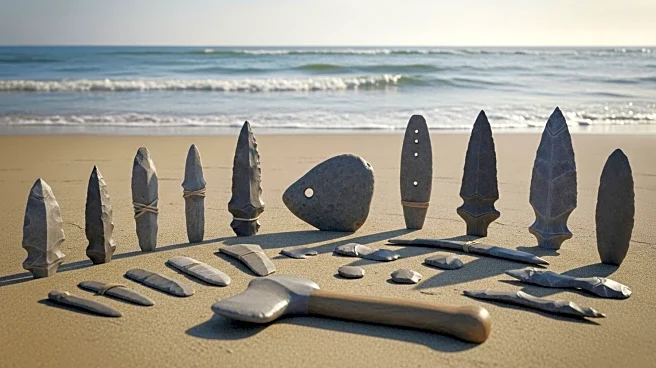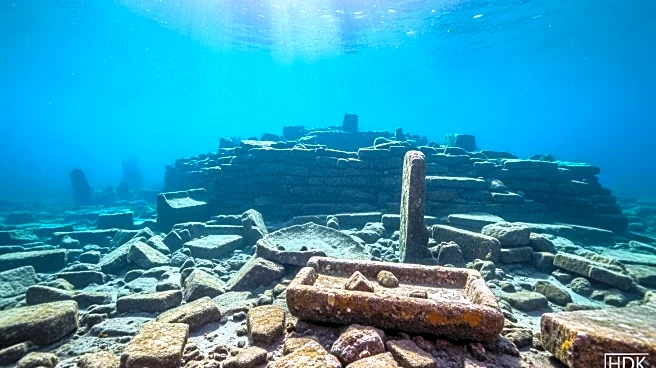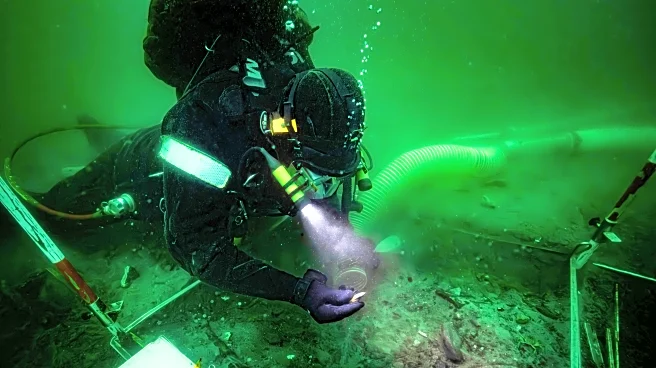What's Happening?
Archaeologists have uncovered an 8,500-year-old Stone Age coastal settlement submerged by rising sea levels in the Bay of Aarhus, Denmark. The discovery is part of a $15.5 million international project funded by the European Union to map parts of the seabed in the Baltic and North Seas. The site, located near Aarhus, Denmark's second-largest city, has revealed animal bones, stone tools, arrowheads, a seal tooth, and a small piece of worked wood. Researchers are using underwater vacuum cleaners to meticulously excavate the site, aiming to uncover more artifacts such as harpoons and fishhooks. The project seeks to explore sunken Northern European landscapes and uncover lost Mesolithic settlements as offshore wind farms and other sea infrastructure expand.
Why It's Important?
The discovery of the submerged Stone Age settlement provides valuable insights into how ancient societies adapted to rising sea levels, a challenge that modern societies face due to climate change. By studying these ancient settlements, researchers hope to understand the impact of environmental changes on human populations and how they adapted to shifting coastlines. This knowledge could inform current strategies for dealing with climate change and rising sea levels. Additionally, the project highlights the importance of preserving underwater archaeological sites, which can offer a 'time capsule' of historical data preserved in oxygen-free environments.
What's Next?
Further excavations are planned in the Bay of Aarhus and off the coast of Germany, followed by work at two locations in the North Sea. Researchers aim to find more artifacts and use dendrochronology to study submerged tree stumps, which can provide precise dating of when rising tides drowned coastal forests. This research will contribute to a better understanding of historical sea level changes and their impact on ancient societies.
Beyond the Headlines
The project not only sheds light on ancient human adaptation to environmental changes but also emphasizes the importance of interdisciplinary collaboration in archaeology. By integrating dendrochronology, underwater excavation techniques, and historical analysis, researchers can build a comprehensive picture of past climate events and their effects on human settlements.












